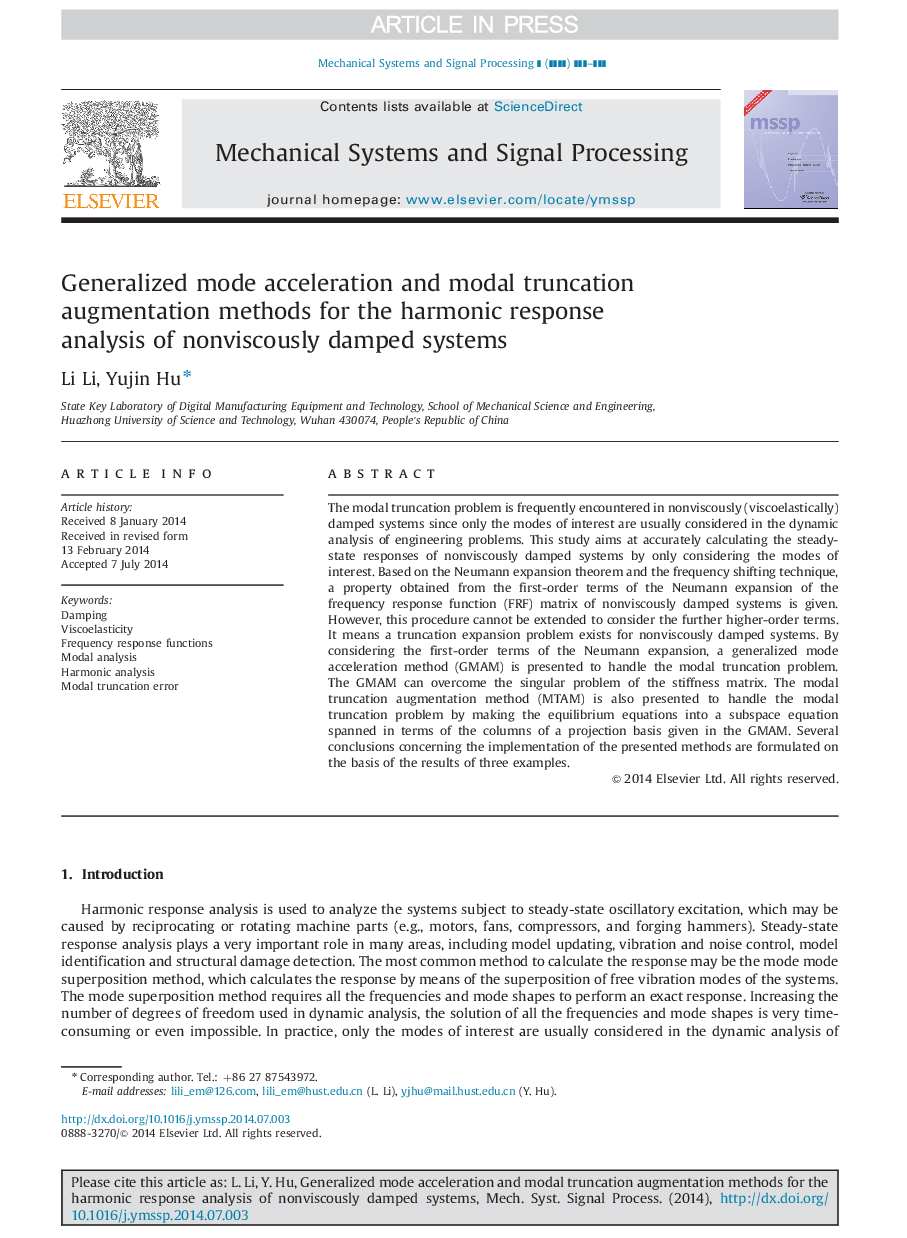| Article ID | Journal | Published Year | Pages | File Type |
|---|---|---|---|---|
| 6956229 | Mechanical Systems and Signal Processing | 2015 | 14 Pages |
Abstract
The modal truncation problem is frequently encountered in nonviscously (viscoelastically) damped systems since only the modes of interest are usually considered in the dynamic analysis of engineering problems. This study aims at accurately calculating the steady-state responses of nonviscously damped systems by only considering the modes of interest. Based on the Neumann expansion theorem and the frequency shifting technique, a property obtained from the first-order terms of the Neumann expansion of the frequency response function (FRF) matrix of nonviscously damped systems is given. However, this procedure cannot be extended to consider the further higher-order terms. It means a truncation expansion problem exists for nonviscously damped systems. By considering the first-order terms of the Neumann expansion, a generalized mode acceleration method (GMAM) is presented to handle the modal truncation problem. The GMAM can overcome the singular problem of the stiffness matrix. The modal truncation augmentation method (MTAM) is also presented to handle the modal truncation problem by making the equilibrium equations into a subspace equation spanned in terms of the columns of a projection basis given in the GMAM. Several conclusions concerning the implementation of the presented methods are formulated on the basis of the results of three examples.
Related Topics
Physical Sciences and Engineering
Computer Science
Signal Processing
Authors
Li Li, Yujin Hu,
